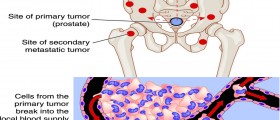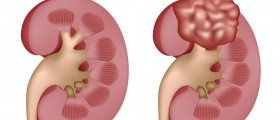
About ProstateCancer
Prostate cancerdevelops in the prostate. This cancer of male reproductive gland is usuallygrowing very slow, but there are also some aggressive prostate cancers recorded.
Symptoms ofprostate cancer can include pain and problems with urination or during the sexual intercourse. Erectile dysfunction is yet another possible symptom of theprostate cancer. From the prostate, cancer cells may spread to other organs andtissues in the body. This spread is known as metastasis and it is known toaffect the bones and lymph nodes in people suffering from prostate cancer.This type of cancer may remain unnoticed and undiagnosed when peopledon’t have any apparent symptoms. These patients are often said to die of someother medical problem they have, rather than from prostate cancer.
Patientssuffering from this type pf cancer are usually older men and most of them are older than 50 years of age.
Prostate cancer is usually treated with surgery, radiation and proton therapy. Dependingon the specific case, doctors may recommend other types of treatments, such as chemotherapy, hormonal therapy and sometimes cryosurgery. High intensityfocused ultrasound (HIFU) is another option for the treatment of prostatecancer.
Stages ofProstate Cancer
Doctors have todetermine the stage and growth rate of prostate cancer, in order to be able tofind the best treatment option for the patient and his medical condition. Theycan do that by determining the spread of the prostate cancer to surrounding orsome distant organs and tissues in the body.
Grading of theprostate cancer cells is based on their development and the stage of growth they are in. In many ways, prostate cancer cells are similar to normal bodycells. Gleason system ismethod of grading used to determine similarities of prostate cancer and normalbody cells. The grade vary from 1 to 5. Cancer cells graded as 1 are verysimilar to normal cells. Prostate cancer cells graded as 5, on the other handare so much different than normal cells that there is a little resemblanceanymore. For this test, doctors use cells from two different areas of theaffected gland so the result can be anything from 2 to 10. High Gleason scoreshows that this particular cancer is of aggressive form.
Another systemfor the determination of the cancer spread is TNM system. It describes thecancer (T stands for tumor or cancer), the lymph nodes (that’s what Nstands for) and also metastasis (M in TNM) of the cancer (spread to other tissues in thebody). There are T1, T2, T3 and T4 stages of the prostate cancer. If thepatient is determined to have prostate cancer in either T1 or T2 stage, doctorsalready know that this cancer is confined to prostate only. Stages T3 and T4describe the prostate cancer which started to spread to other organs in thebody.

















Your thoughts on this
Loading...